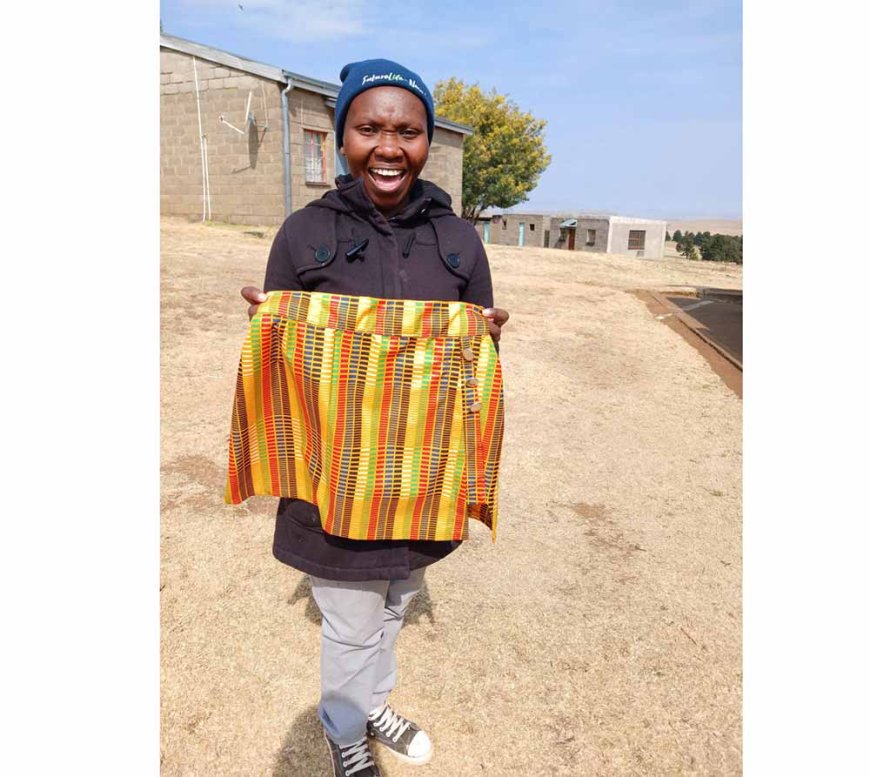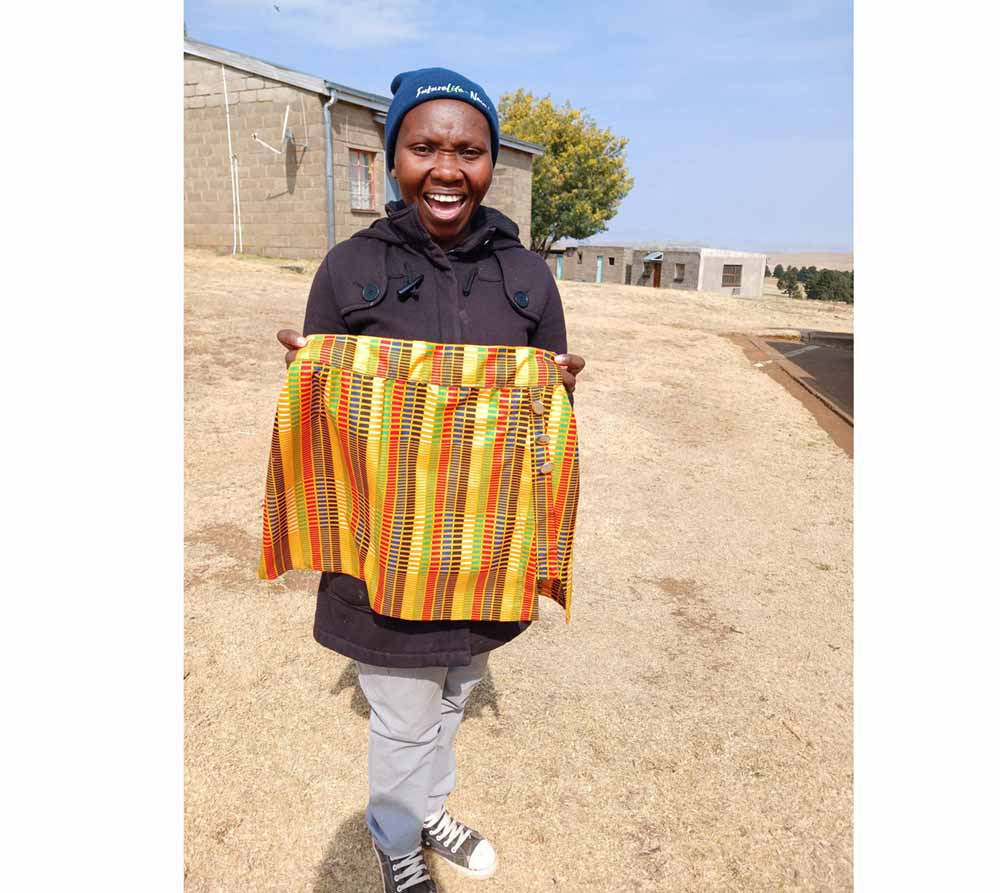“Every youth’s right to have a child when they’re ready”: Lesotho grapples with high rates of teen pregnancy
“Every youth's right to have a child when they're ready”: Lesotho ... Gavi, the Vaccine Alliance

Addressing Teenage Pregnancy in Lesotho: A Report on the Good Shepherd Centre for Teenage Mothers
Five young mothers sit around a table at the Good Shepherd Centre for Teenage Mothers in Berea district, Lesotho, one mid-August day.
“The minute a girl starts her menstrual periods, she will be told not to play with boys. Nothing is said about the changes in her body and how she can go about adapting to those changes.”
– Lipuo Moleko
Eighteen-year-old Lipuo Moleko is the youngest. With her are Boitumelo Mosakeng, 21, Puleng Moleko, 22, Mpho Sebata, 23, and Keneuoe Ramohanoe, 26. Moleko opens the conversation, explaining how she ended up living here – the Centre provides a safe and supportive landing place for young mothers learning to care for themselves and their children.

Credit Pascalinah Kabi
She fell pregnant two years ago, Moleko says, after her friends encouraged her to go out with an “older, cute and wealthy man” who works for the government.
Her friends advised her to terminate the pregnancy, but “a senior student told me she aborted her pregnancy and that abortion is the most lonely, painful experience ever. I did not abort,” Moleko recounts.
Moleko believes one of the major causes for high teenage pregnancy is that many families in Lesotho still associate the start of a girl’s menstrual periods with sex.
“The minute a girl starts her menstrual periods, she will be told not to play with boys. Nothing is said about the changes in her body and how she can go about adapting to those changes. Our parents’ top priority is ‘don’t have sex with boys’. Parents need to stop associating menstruation with sex, leaving the responsibility of preventing pregnancy on girls alone,” Moleko says.
Challenges and Solutions
Staff member Sister Constance Mosakeng said the Centre is currently home to 29 young mothers and their babies. In most cases, she says, they’ve been discriminated against by their communities.
- High rates of teenage pregnancy remain a challenge across Lesotho. Between 2003 and 2018, 94 girls out of every 1,000 in the age group 15–19 gave birth, according to UNFPA.
- In June this year, at the launch of a radio drama called Let’s Talk! Pregnancy at the Right Time, UNESCO National Programme Officer Lineo “Malesaoana Molapo told a gathering that adolescent girls who fall pregnant mostly hail from rural areas and low socio-economic status.
- To help ease the high rate of teen pregnancy, UNESCO is supporting Lesotho in developing and implementing a school health and nutrition policy, which includes helping young people access sexual and reproductive health services from health facilities, Molapo said.
Engaging Boys and Men
“During the [radio] drama, the host will bring in experts, and young people will be allowed to deliberate on the issues, and say how best we can deal with challenges differently and not fall pregnant,” Molapo said.
“Boys and older males in Lesotho can play a crucial role in curbing teenage pregnancy by actively engaging in various initiatives that include challenging traditional gender norms that perpetuate unequal power dynamics between genders.”
– Harry Nkhetse, Life Coach
Life Coach Harry Nkhetse told VaccinesWork that teenage pregnancy is a complex issue that requires a multifaceted approach to address it effectively. He echoes teen mum Moleko’s point – that responsibility for not becoming pregnant cannot be heaped exclusively onto girls’ shoulders.
- “Boys and older males in Lesotho can play a crucial role in curbing teenage pregnancy by actively engaging in various initiatives that include challenging traditional gender norms that perpetuate unequal power dynamics between genders. They can actively promote gender equality and respect for women and girls, both within their own relationships and in their communities,” Nkhetse said.
- Nkhetse says he established Letlotlo Boy-Child Programme after realizing that “all developmental programmes” focused on a girl child.
- “In our view, boys are equally vulnerable. Our programme provides boys with comprehensive information and knowledge about this issue. We hope that this can contribute to reducing the rate of early pregnancies, promoting gender equality, and fostering responsible behavior among boys,” he said.
Access to Contraceptives
Meanwhile, Good Shepherd Centre resident Keneuoe Ramohanoe believes Roman Catholic Church health facilities should consider offering contraceptives, especially to young girls desperate to prevent early and unintended pregnancies.
Ministry of Health Adolescent Health Program Manager ‘Mathato Nkuatsana said most pregnant girls present to health facilities very late in their pregnancies because of fear of being judged by older women.
For her part, 22-year-old Puleng Tlali says every “concoction” she drank in attempt to terminate her pregnancy four years ago failed. “Instead I gave birth to a healthy son, Naleli. I am lucky to have a solid support system from my family,” Tlali said.
In May 2022, UNFPA reported
SDGs, Targets, and Indicators Relevant to the Issues Discussed
-
SDG 3: Good Health and Well-being
- Target 3.7: By 2030, ensure universal access to sexual and reproductive health-care services, including for family planning, information and education, and the integration of reproductive health into national strategies and programs.
- Indicator 3.7.1: Proportion of women of reproductive age (15-49 years) who have their need for family planning satisfied with modern methods.
The article discusses the high rates of teenage pregnancy in Lesotho and the need for access to sexual and reproductive health services, including contraceptives, for young girls. This aligns with SDG 3, which aims to ensure good health and well-being for all. Target 3.7 specifically addresses universal access to sexual and reproductive health-care services, including family planning. The indicator 3.7.1 measures the proportion of women of reproductive age who have their need for family planning satisfied with modern methods, which is relevant to the issue of teenage pregnancy.
-
SDG 5: Gender Equality
- Target 5.3: Eliminate all harmful practices, such as child, early and forced marriage and female genital mutilation.
- Indicator 5.3.1: Proportion of women aged 20-24 years who were married or in a union before age 18.
The article highlights the need to challenge traditional gender norms and promote gender equality to address teenage pregnancy. SDG 5 focuses on achieving gender equality and empowering all women and girls. Target 5.3 specifically addresses the elimination of harmful practices, including child, early, and forced marriage. The indicator 5.3.1 measures the proportion of women aged 20-24 years who were married or in a union before the age of 18, which is relevant to the issue of teenage pregnancy.
-
SDG 10: Reduced Inequalities
- Target 10.2: By 2030, empower and promote the social, economic, and political inclusion of all, irrespective of age, sex, disability, race, ethnicity, origin, religion, or economic or other status.
- Indicator 10.2.1: Proportion of people living below 50 percent of median income, by age, sex, and persons with disabilities.
The article mentions the discrimination faced by young mothers in their communities, which relates to the issue of reduced inequalities. SDG 10 aims to reduce inequalities within and among countries. Target 10.2 specifically focuses on promoting the social, economic, and political inclusion of all individuals. The indicator 10.2.1 measures the proportion of people living below 50 percent of the median income, which can reflect economic inequalities.
Table: SDGs, Targets, and Indicators
| SDGs | Targets | Indicators |
|---|---|---|
| SDG 3: Good Health and Well-being | Target 3.7: By 2030, ensure universal access to sexual and reproductive health-care services, including for family planning, information and education, and the integration of reproductive health into national strategies and programs. | Indicator 3.7.1: Proportion of women of reproductive age (15-49 years) who have their need for family planning satisfied with modern methods. |
| SDG 5: Gender Equality | Target 5.3: Eliminate all harmful practices, such as child, early and forced marriage and female genital mutilation. | Indicator 5.3.1: Proportion of women aged 20-24 years who were married or in a union before age 18. |
| SDG 10: Reduced Inequalities | Target 10.2: By 2030, empower and promote the social, economic, and political inclusion of all, irrespective of age, sex, disability, race, ethnicity, origin, religion, or economic or other status. | Indicator 10.2.1: Proportion of people living below 50 percent of median income, by age, sex, and persons with disabilities. |
Behold! This splendid article springs forth from the wellspring of knowledge, shaped by a wondrous proprietary AI technology that delved into a vast ocean of data, illuminating the path towards the Sustainable Development Goals. Remember that all rights are reserved by SDG Investors LLC, empowering us to champion progress together.
Source: gavi.org

Join us, as fellow seekers of change, on a transformative journey at https://sdgtalks.ai/welcome, where you can become a member and actively contribute to shaping a brighter future.







